Everything You Ever Wanted to Know About Sets… But Were Afraid to Ask
You may have spent lots of time and effort researching which insulin pump was the best match for your / your child’s needs, but if you're at all like our family, chances are you spent little or no time thinking about the infusion set. But they play a critical role in the safety and success of pumping. So here is a concise summary of the options available and factors to consider - so that you can find the infusion sets that best match your family’s needs.
What is an Infusion Set?
An infusion set is the delivery system to get the insulin from the pump to your body. Infusion sets includes the following components:
A cannula = the tiny plastic or metal tube that goes under the skin to deliver insulin into the fatty tissue just below the surface of the skin
A hub = the plastic piece and adhesive dressing that sits on top of the skin, that holds the cannula in place
Tubing = flexible tube that carries the insulin from the pump to the infusion site
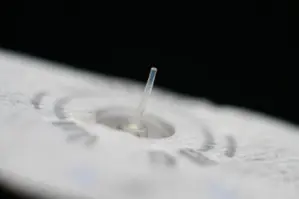
Connector = point at which the tubing connects to the insulin pump reservoir/cartridge; types include a universal “Luer-lock” or a proprietary connection (such as those for Medtronic Minimed and Tandem t:slim pumps).
Infusion sets are typically changed every 2-3 days. After use, the set is thrown away.
What's the difference between an Infusion Set & Infusion Site?
An infusion set is the part of an insulin pump that sits on your skin; the infusion site is the place on your body where the infusion set is attached. To avoid tissue damage that may affect absorption of insulin (which would, in turn, increase the unpredictability of resulting blood glucose), sites must be rotated regularly.
SHARE THIS ARTICLE
Choosing an Infusion Set What Factors Should I Consider?
Just like most diabetes decisions, there are few right or wrong choices when it comes to infusion sets. The “best” infusion set for your child is the one that best matches your child’s physical needs, lifestyle, and your family’s preferences. With that in mind, there are a variety of factors to consider when choosing an infusion set:
-
Fixed (Steel*) or Flexible (Plastic) cannula?
The benefit of a fixed cannula, which is made of metal, is that it will not bend (like a flexible cannula may), so you know that the insulin is getting in under the skin where the body can use it (as long as it’s inserted properly, of course, and the pump is working as it should). This often makes a fixed cannula a good choice for small children, for whom reliability may be a priority (as small variations in insulin delivery can have large effects in little bodies). Also, if your child has a sensitivity or allergy to the components of some flexible cannulas (such as Teflon), a metal cannula may be the solution.
(*refers to stainless steel; different manufacturers use different metals, including nickel)
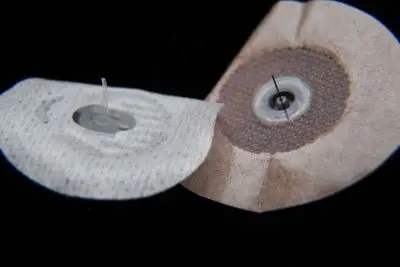
Tips from the Trenches
When my son first started pumping at 3 years old, we had trouble finding blood glucose trends and adjusting the pump settings. To take one variable out of the picture, therefore, we used only infusion sets with a fixed cannula. That way, at least we could be sure the insulin was getting in, which allowed us to explore other potential causes of variability in his blood glucose. ~Michelle
The downside of its unyielding nature, however, is that a fixed cannula can be less comfortable, particularly if the infusion site is bumped. For this reason, a fixed/metal cannula may not be the best choice for very lean individuals, including athletes (who tend to have minimal subcutaneous “fatty” tissue), as the cannula is more likely to contact muscle tissue. This can be uncomfortable and problematic in terms of insulin absorption.
Tips from the Trenches
When my son was little, we tried using infusion sets with a metal cannula. But he would sometimes complain that the site hurt, especially if he landed on his bum (infusion site) on the trampoline, or if it got bumped when he was wrestling with his brother. ~Danielle
The main benefit of a flexible cannula is comfort; wearers typically do not feel it at all once it’s on. As a result, this is the most common cannula-type used by insulin pumpers. However, because the cannula is flexible, it can bend or kink upon insertion and/or when the cannula comes in contact with muscle, which interrupts the flow of insulin, resulting in high blood glucose and the potential for ketones to develop. Because of this potential for unreliability, a flexible cannula may not be the best choice for very young children (for whom a small interruption in insulin may have a bigger effect).
-
Cannula length
The length of the cannula varies between different makes and models of infusion sets, from 6 to 13mm long for flexible cannulas. Since the goal is to infuse the insulin into the layer of fat below the skin (i.e. subcutaneous tissue) where it is absorbed most effectively, without going so deep as to encounter the muscle below, the length of cannula (combined with the angle of insertion, described next) should ideally match the depth of an individual’s subcutaneous fat layer. The shorter cannula length is appropriate for most people (teens, adults, and little ones), perhaps even necessary for leaner individuals and for children; a longer cannula length may be a wise choice for individuals with a high BMI (Body Mass Index), and for those who typically deliver very large boluses. Of course, personal preference is an important factor, too.
-
Angled or 90-degree insertion?
Some infusion sets are inserted straight down into the skin (at 90); others are inserted at an angle (between 20 and 45 down from the surface of the skin). Which is most appropriate depends largely on the amount of subcutaneous, “fatty” tissue an individual has – if there is little depth to the fat layer right below the skin, then an angled set may be best, as the depth of insertion can be manipulated to keep the end of the cannula in the fat layer as desired, while avoiding the layer of muscle below the fat. For this reason, small or lean individuals (including athletes, who tend to have minimal subcutaneous “fatty” tissue) may feel an angled infusion set is a good match for their needs.
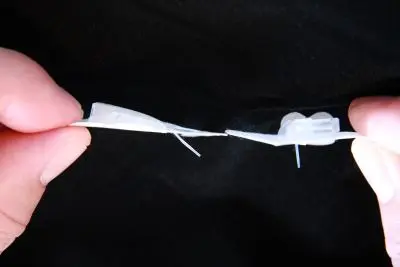
The main drawback of an angled infusion set is that it uses up more “real estate” – more linear space is affected when a cannula of a given length sits in the tissue for a few days, which means a longer space of tissue needs to heal, so the next set needs to be placed further over on the skin than if the cannula was inserted at 90. If you find that you are having trouble finding enough viable infusion sites, angled sets may not be the best match for your needs.
Tips from the Trenches
It’s a challenge to find an infusion set that is the best balance of competing priorities… our son is young (six years old) and lean, so it would seem that angled infusion sets would be a good match for him. However, the only place that he has sufficient fat for insulin infusion is on his bottom – any time we try to use his arms, thighs, or belly, we hit muscle and get wonky numbers. Because he has relatively little “real estate”, we have opted for 90° insertion sets, so that we can get more infusion sites out of that limited surface area on his bottom. To get to this place, we have consulted extensively with our son’s diabetes health care team, and with other parents who have faced the same challenges. ~Michelle
-
Tubing Length:
The length of tubing can vary from 60cm (23”) to 110 cm (43”) and beyond. So how long should your tubing be? A pumper once advised me that the ideal tubing length is one in which, if the pump is worn in the pants pocket or on the belt, it will be long enough so that your pants can hit the floor when you go to bathroom, but short enough to not snag it on door handles and knobs all the time. This aspect of “short enough” is especially true for younger children, and anyone else who tends to forget to tuck their tubing in. This factor likely isn’t a deal-breaker – pick the infusion set or sets that work best for you based on the above factors first, and you will likely find your preferred brand and model of infusion set is available in a variety of tubing lengths to meet your needs.
-
Serter or Manual Insertion?
Some infusion sets have a matching housing assembly which automatically inserts the infusion set – just load the spring and press a button, and the serter will do the rest. Other infusion sets are inserted manually. Which type is best depends largely on preference.
Serters may make for a more comfortable insertion, as the needle goes in and out of the skin very quickly, at the ideal depth. Serters are also a plus if you/your child prefers not to see the introducer needle/metal cannula. If it is a deal-breaker for you to have automatic insertion for this reason, you may want to narrow your research to those sets which have this option (either as a pre-constructed, disposable inserter, or as a re-usable inserter into which you load each disposable infusion set). Infusion sets that come with a serter may be a good choice for when your child is learning to insert their own infusion sets as you hand over diabetes care tasks.
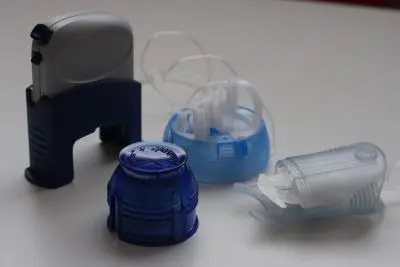
Manual insertion infusion sets may be a good match for those who don’t mind seeing the needle, don’t want to fuss with a serter, springs and buttons, and/or want to reduce the amount of garbage/recycling that diabetes creates in their lives. If you want to reduce your environmental footprint, you may want to focus your research on infusion sets that are inserted manually, or with a reusable serter.
Tips from the Trenches
When my son used the disposable, automatic-insertion infusion sets, we found a way to use them and further minimize our footprint. We would use pliers to pull the insertion needle out and then dispose in our sharpie bin which meant we could then safely recycle the left-over plastic. ~Danielle
-
Connector type:
Many insulin pumps are now using proprietary infusion set connectors specifically designed to work with (and only with) their own pump reservoir. Medtronic Minimed pumps as well as the Tandem t:slim have proprietary connectors, which means the pumpers choices of infusions sets are limited to those offered by their pump company. This is not typically a problem, as they offer a wide-range of infusion sets with a choice on the above features. However, it could become problematic if you need to explore alternate manufacturers because of an allergy, for example.
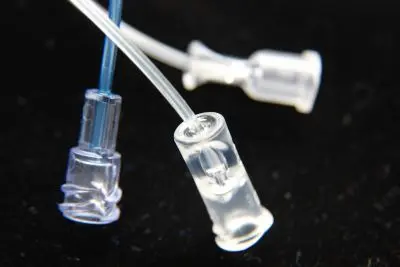
Omnipod’s infusion sets are also proprietary, in a sense, since there is NO connector – the pod IS the infusion set.
Some infusion sets have a type of universal connector called a Luer-lock. If your pump uses this type of connection, you can use Luer-lock infusion sets offered by any company.
-
Other Factors:
There is also a range of options regarding one-handed insertion/disconnection, protection of the introducer needle after insertion, and reversibility of the connector (Orbit infusion sets rotate 360 degrees, so you can change the orientation of the tubing as needed). Some are even available in different colours (pink, blue, grey, clear for example). For more on these options and others, your best bet is to talk to your diabetes educator or an online diabetes supplier that carries pump supplies.
The above information was reviewed for content accuracy by clinical staff of the Alberta Children’s Hospital Diabetes Clinic.
SHARE THIS ARTICLE